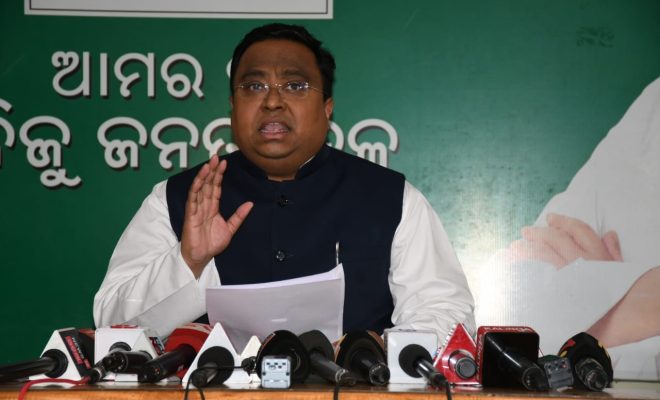BJP Sasmit Patra’s Insights on Parliament’s Role Amidst Legal Evolution

“No five-judge bench of Supreme Court can represent 140 crore Indians”: BJD MP Sasmit Patra on clashes between the Judiciary-Legislature Realtions.
In a pivotal parliamentary discussion on December 21, BJD MP Sasmit Patra emphatically defended Parliament’s legislative autonomy, challenging the notion that a five-judge Supreme Court bench can accurately represent 140 crore Indians. The discourse unfolded during the deliberation on the Bharatiya Nyaya (Second) Sanhita 2023; Bharatiya Nagarik Suraksha (Second) Sanhita 2023; and Bharatiya Sakshya (Second) Bill 2023 in the Rajya Sabha.
Upholding Parliamentary Sovereignty
“The Parliament reflects the true conscience and mandate of the people of this country. We [MPs] have come here with the support of 140 crore citizens. Many a time when MPs are briefed by the law department, the Kesavananda Bharti case is mentioned to emphasise that the Parliament has no right of the basic structure… we [MPs] cannot legislate on that…” Patra said.
Sasmit Patra’s impassioned plea resonated with the fundamental principles of parliamentary sovereignty. He asserted that the Supreme Court should not dictate legislative powers, emphasizing the essence of parliamentary independence in crafting laws. Patra stressed that while the Constitution holds supremacy, Parliament, as the representative of 140 crore citizens, should retain its legislative rights.
Addressing the Judiciary’s Role
Drawing attention to his experience as an intervenor in a constitutional bench hearing on same-sex marriage, Patra highlighted a concerning mindset among some legal practitioners. He recounted instances where advocates suggested the Judiciary’s authority to challenge and strike down parliamentary bills, questioning, “What will the Parliament do?” This perception, according to Patra, underscores the need to reevaluate the balance between the Judiciary and the Legislature.
Keep Reading
Parliamentary Rights in Legislation
Sasmit Patra underscored the unique role of Parliament as the true reflection of the people’s will. Citing instances where MPs are reminded of the Kesavananda Bharti case, he emphasized that Parliament cannot legislate on the basic structure. He quoted Vice President Jagdeep Dhankar, advocating for the preservation of parliamentary sovereignty in legislative competence.
Kesavananda Bharti Case and Basic Structure Doctrine
Patra delved into the significance of the Kesavananda Bharti case, a landmark verdict that established the Basic Structure Doctrine, safeguarding certain features of the Indian Constitution from amendments. He challenged the misinterpretation of this case to question Parliament’s authority, asserting that both houses have the complete right to legislate.
Democracy’s Triad: Legislature, Executive, and Judiciary
Quoting Vice President Dhankar’s speech, Patra emphasized the symbiotic relationship needed among the three pillars of democracy: Legislature, Executive, and Judiciary. He argued against unwarranted interventions, urging for a clear understanding that each pillar should respect its defined functions.
Concluding Thoughts on Judicial and Legislative Collaboration
Sasmit Patra concluded his address by questioning the fear of contempt of court and urged Parliament not to relinquish its rights to the Judiciary. He highlighted the need for a collaborative approach where each pillar contributes to the constitutional goals, fulfilling the nation’s aspirations without encroaching on each other’s functions.
As the parliamentary debate unfolded, three significant Bills aimed at replacing the Indian Penal Code, Code of Criminal Procedure, and Indian Evidence Act were passed by the Rajya Sabha. Union Home Minister Amit Shah, in response to the debate, assured that the implementation of new criminal laws would expedite justice, signaling an end to prolonged legal delays.



